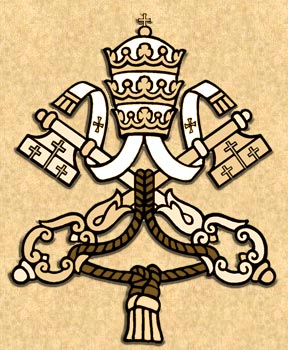The 200,000 participants in tonight's vigil leading up to the beatification of Pope John Paul II discovered a few new things about the Polish Pope, thanks to the testimonies of some of his closest collaborators.
The encounter, held at Rome's Circus Maximus, also featured the testimony of Sister Marie Simon-Pierre, religious of the Congregation of the Little Sisters of Catholic Motherhood, regarding her miraculous cure from Parkinson's that she attributes to the intercession of Pope John Paul II.
"John Paul II is looking upon us from heaven and smiling," the religious said at the vigil.
After detailing her illness and cure, the nun expressed her amazement that not only was she cured, but that she was able to be a part of the beatification of John Paul II, and give her testimony at the prayer vigil.
Navarro-Valls: Weekly confession
Joaquín Navarro-Valls, who was John Paul II's spokesman for 21 years, explained that to understand the soon-to-be beatified Pontiff, one must first understand Divine Mercy.
The former spokesman revealed that John Paul II "confessed every week" because "he knew that we, human beings, cannot make ourselves beautiful and pure on our own. We need the help that comes from God through the sacraments."
"For a Christian, to pray is a duty that is the result of a conviction: for him it was a need, he couldn't live without prayer," Navarro Valls added. "To see him pray was to see a person who was in conversation with God."
Navarro-Valls recalled that he would see John Paul II in his private chapel, kneeling, with little pieces of paper that he would read, and then he would pray a long time. These were texts of the numerous letters from people from all over the world that would write to him, and that he brought with him to the chapel.
Cardinal Dziwisz: The two times he got angry
Cardinal Stanislaw Dziwisz, the archbishop of Krakow, who was John Paul II's personal secretary for more than 40 years, spoke of the two loves of the Polish Pontiff: "God and mankind, and in particular the youth."
He also revealed the two occasions he saw John Paul II "really angry," but with "good reason."
"In Agrigento, [Sicily], he raised his voice against the mafia, and we were all a little scared," he said.
"And the other occasion was during the Angelus, before the Iraq War, when he said with force: no to war, war doesn't resolve anything. I have seen war. I know what war is."
"He sent a cardinal to Washington, [D.C], and another to Baghdad, to say: do not seek to resolve these problems with war. And he was right. The war is still ongoing and it hasn't resolved anything."
At the end, Cardinal Dziwisz revealed that the greatest satisfaction of his life was seeing how people all over the world accepted John Paul II. He said that at the beginning of the pontificate, he was called "the Polish Pope," but toward the end even non-Christians called him "Our Pope."
"And tomorrow," the cardinal added, "we will call him Blessed John Paul II."
World rosary
During the second part of the vigil, the mysteries John Paul II added to the rosary -- the luminous mysteries -- were prayed, with a simultaneous video-connection to five Marian shrines: in Krakow, Tanzania, Lebanon, Mexico, and Fatima.
Each of the mysteries were tied to a prayer intention of importance to John Paul II: at the sanctuary of Lagiewniki in Krakow, Poland, the intention was for the youth; at the sanctuary of Kawekamo, Bugando, Tanzania, the intention was for the family; at the sanctuary of Our Lady of Guadalupe in Mexico City, Mexico, the intention was for hope and peace among nations; at the sanctuary of Fatima, the intention was for the Church.
The vigil ended at 10:30 p.m. Rome time with the final prayer and apostolic blessing, which was led by Benedict XVI, who participated in the event through a satellite hook-up.
http://www.zenit.org/article-32438?l=english
Evil triumphs when good men do nothing - Edmund Burke
Sunday, May 1, 2011
Subscribe to:
Post Comments (Atom)









No comments:
Post a Comment